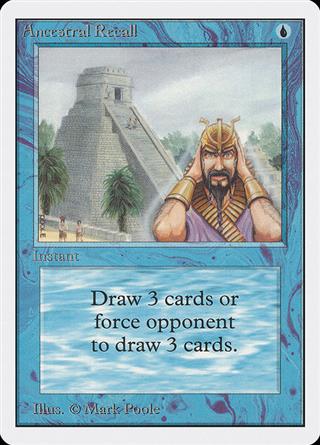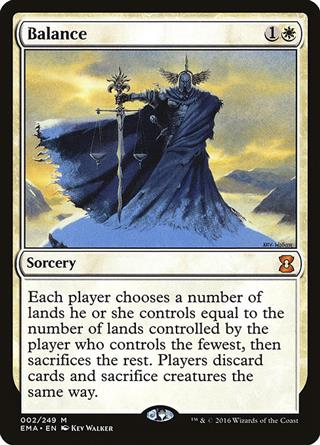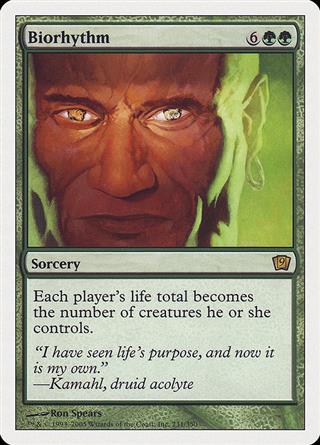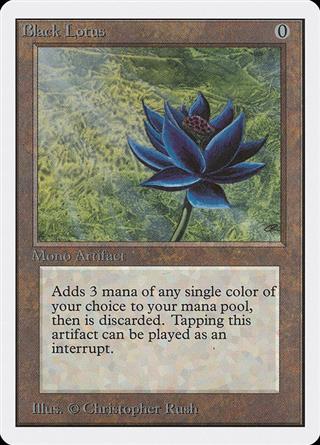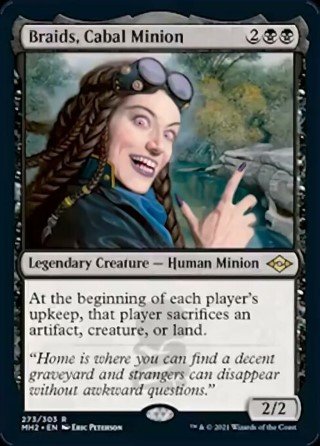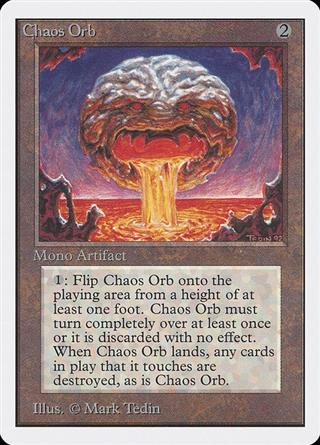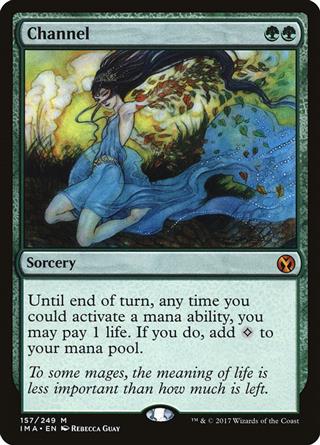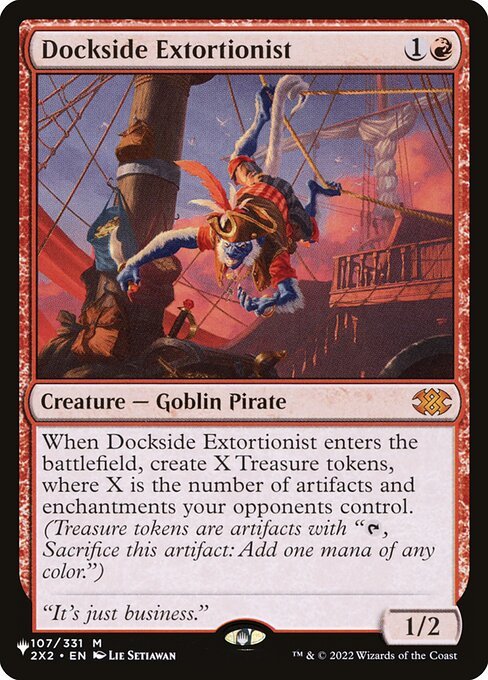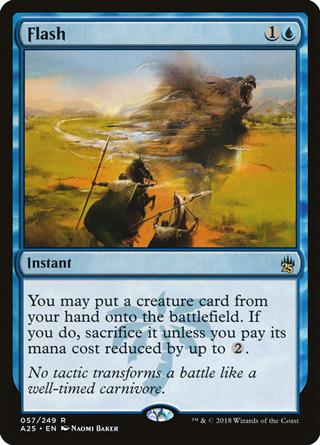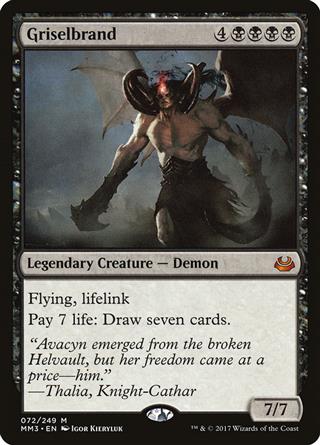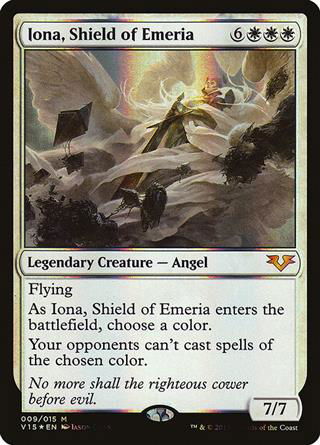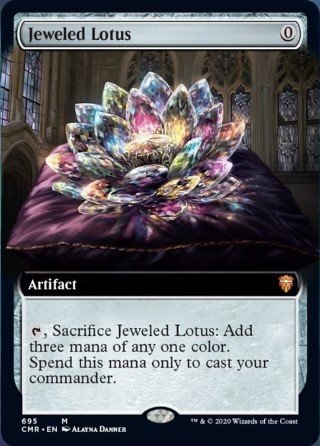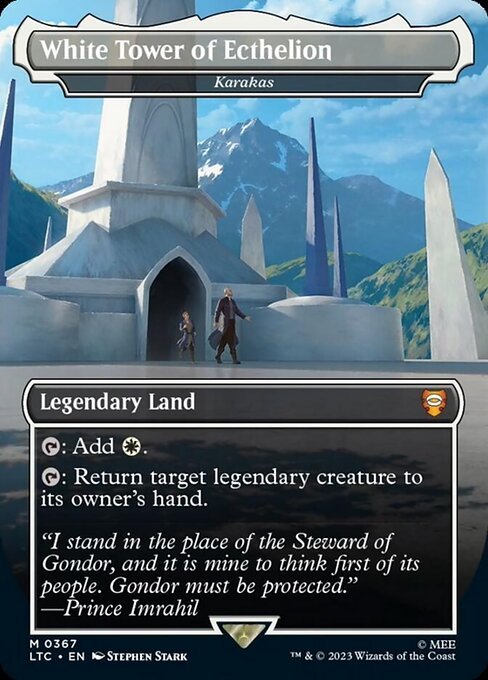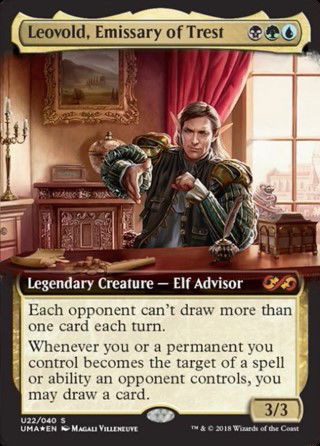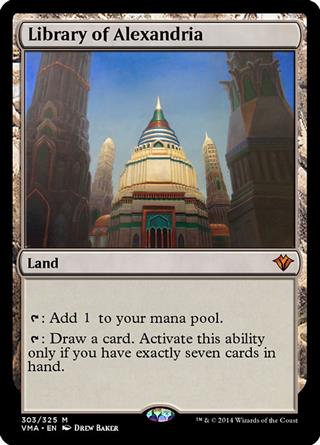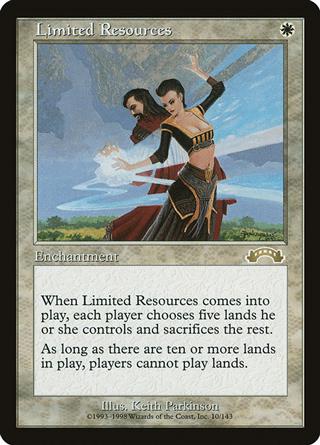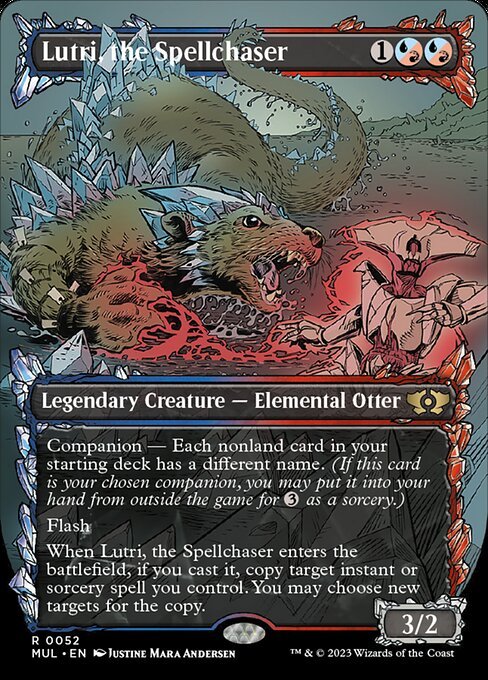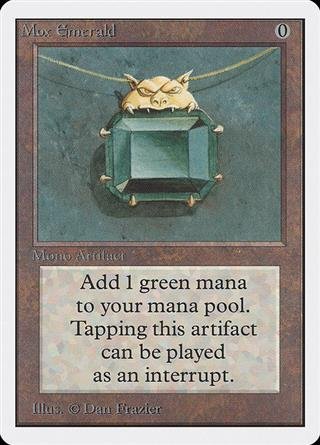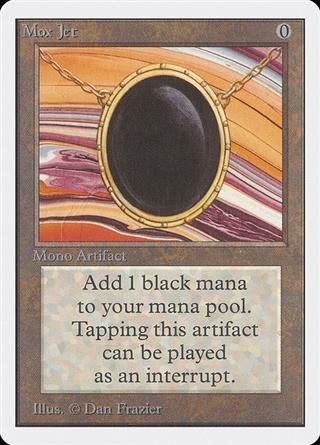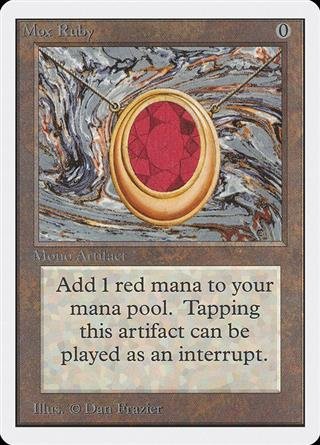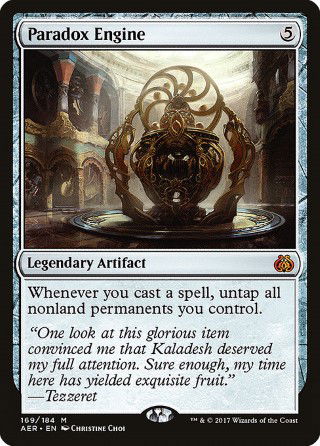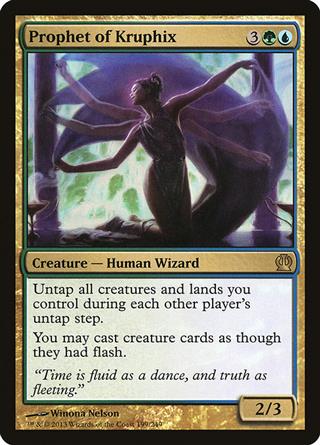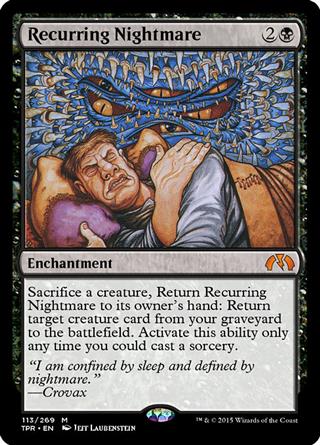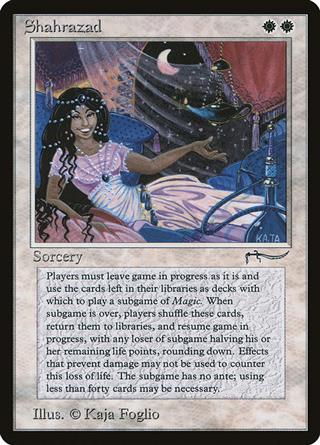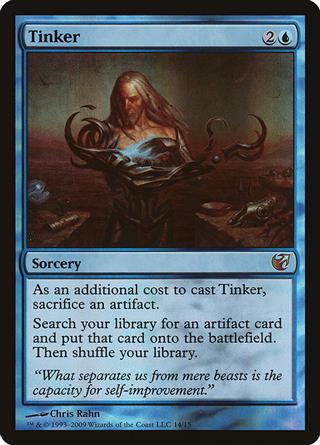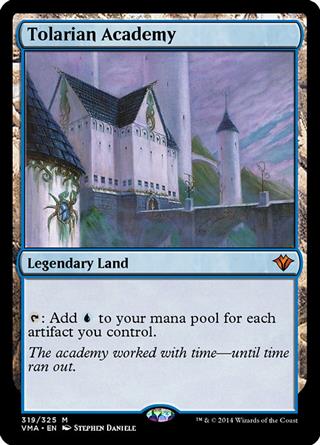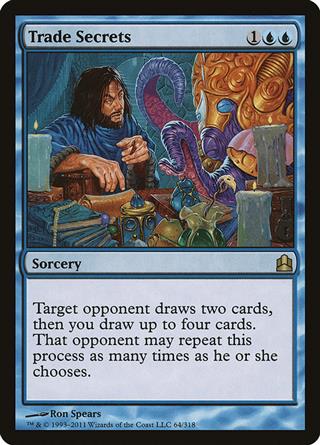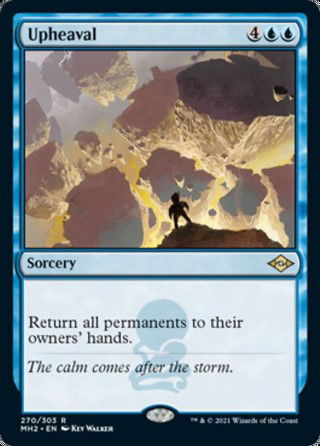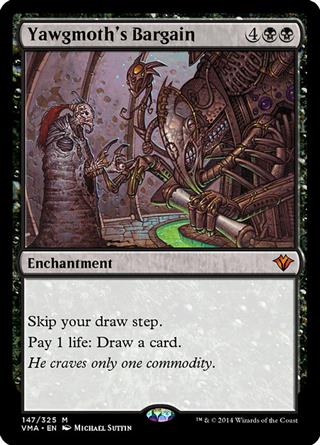EDH Ban List Explained - What's Banned In Commander And Why?

Commander is often a broken format, and you can do many "overpowered" things all well within the rules. However, some cards are prohibited in the format, which can sometimes be confusing. Why can I play this busted combo but not Panoptic Mirror ? Well, that's what we're talking about today - What's banned in Commander and why?
? Well, that's what we're talking about today - What's banned in Commander and why?
We'll discuss who makes the banning decisions for EDH, their criteria to determine what's ban-worthy, and the "Philosophy of Commander." I'll also provide a complete list of what's banned in the format and go over exactly what landed it on the list. So, without further ado, let's jump into everything you need to know about the Commander ban list.
Understanding The Commander Ban List
Commander is a casual format that handles bans differently than other formats. For example, ban decisions are made by the rules committee instead of WOTC. (Commander Rules Committee Is No More - WOTC Takes Over) Next, bans are not necessarily made on a purely power-level basis. Instead, cards are more so looked at through the lens of what's fun. In general, these are the factors that are looked at when considering card bans in EDH:
- Cause severe resource imbalances
- Allow players to win out of nowhere
- Prevent players from contributing to the game in a meaningful way
- Cause other players to feel they must play certain cards, even though they are also problematic
- Are very difficult for other players to interact with, especially if doing so requires dedicated, narrow responses when deck-building
- Interact poorly with the format's multiplayer nature or Commander-specific rules.
- Leads to repetitive gameplay
You can read more about the "Philosophy of Commander" and what keeps it intact here.
Ante, Conspiracy, & Culturally Offensive Cards
The following cards are banned in Commander and MTG as a whole.
Conspiracy cards (card list here) are for a separate, commander-like format and don't work in traditional EDH. Any cards that reference putting up an "ante" or betting (card list here) are also banned. And lastly, a small group of cards deemed socially inappropriate for the game were generally excluded from the game. They are: Crusade , Cleanse
, Cleanse , Invoke Prejudice
, Invoke Prejudice , Pradesh Gypsies
, Pradesh Gypsies , Jihad
, Jihad , and Stone-Throwing Devils
, and Stone-Throwing Devils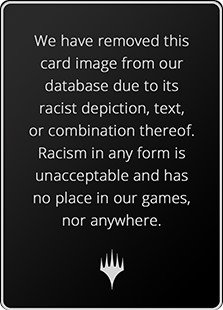 . You can read about the banning and see the cards here.
. You can read about the banning and see the cards here.
What's Banned In Commander And Why
With the ante, conspiracy, & culturally offensive cards out of the way, let's get into the specific commander ban list. And take a look at, and deep-dive into, each card.
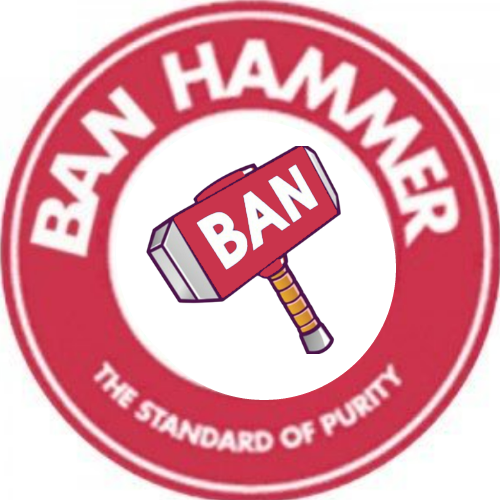
Ancestral Recall
I'm glad we're starting with this card right after looking at what makes cards bannable to the committee. They first mention a card "Causing severe resource imbalances," and Ancestral Recall certainly does that. One mana, draw three cards is too good of a rate, and anyone who casts it will be way ahead of the table.
Furthermore, it's by far the best card draw spell, and were it legal, it would nearly be an automatic include in every deck playing blue. Not only is that undesirable for diversity reasons, but it would put blue leaps and bounds ahead of all other colors in card advantage options.
Balance
Balance sets the game back big time, so it's banned. For just two mana, players sacrifice lands and creatures and discard cards until each player is tied with the player with the fewest resources. Overall, it is not the definition of a fun card. Things like Obliterate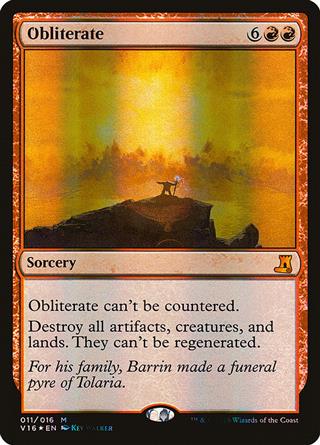 might have similar "unfun" effects but cost much more and are more symmetrical in setting things back.
might have similar "unfun" effects but cost much more and are more symmetrical in setting things back.
Biorhythm
Biorhythm is banned because it makes it way too easy to end the game out of nowhere. It's not as powerful of a wincon as Thassa's Oracle or something, but it's clear that someone is about to get a win after they draw their entire deck. With Biorhythm, you could be in danger of going from 40 life to 0 all because you didn't have a creature in play, and that's the issue.
or something, but it's clear that someone is about to get a win after they draw their entire deck. With Biorhythm, you could be in danger of going from 40 life to 0 all because you didn't have a creature in play, and that's the issue.
Bounce spells (like Evacuate or Cyclonic Rift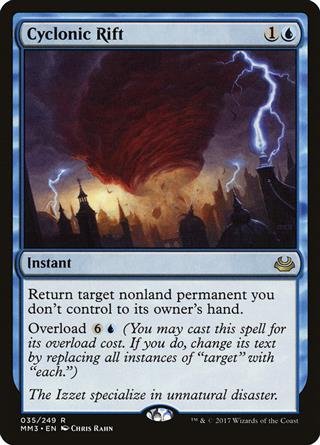 exacerbate this problem quite a bit as well. For example, you bounce everyone's creatures, make a token or something, and cast Biorhythm; that's all she wrote for everyone else at the table.
exacerbate this problem quite a bit as well. For example, you bounce everyone's creatures, make a token or something, and cast Biorhythm; that's all she wrote for everyone else at the table.
Black Lotus
Ah, Black Lotus. The most famous Magic: The Gathering card is one of the most powerful as well. You can cast it for free, and it gives you three mana. That means with a Lotus and a turn one land, players could drop four mana spells on the first turn. Aside from putting any player who drew a Lotus miles ahead of everyone else, it would enable game-winning combos very early.
Braids, Cabal Minion
Braids has two things that really make it a problem. First, it triggers at the start of a turn. If you cast it, everyone else at the table must sacrifice before you. Next, it can make players ditch lands. If you could ramp into an early cast of Braids, it's very likely your opponents would be shut down before they ever really got their feet under them.
Chaos Orb
Chaos Orb is what's known as a "dexterity card." In short, physically throwing a magic card (and the ability to do it well) does not have a place in the current game. Countless logistical problems come along with abilities like this, and there's really no upside to having the card legal in the format. The same is true for Falling Star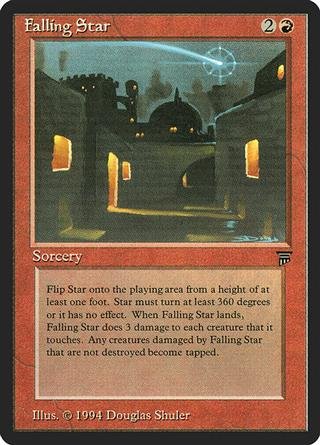 , which is banned for the same reason.
, which is banned for the same reason.
Coalition Victory
Once the requisites are met, Coalition Victory allows you to win the game on the spot - You need a land of every basic land type and a five-color creature. And The way commander color identity works, if you're playing Coalition Victory in your deck, your commander is five colors. So, you'll have automatic access to that portion all throughout the game.
Being five colors also means you'll have access to every land type. With lands like Indatha Triome and Ketria Triome
and Ketria Triome and fetch lands like Marsh Flats
and fetch lands like Marsh Flats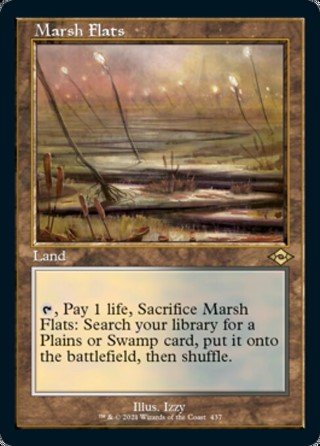 and Windswept Heath
and Windswept Heath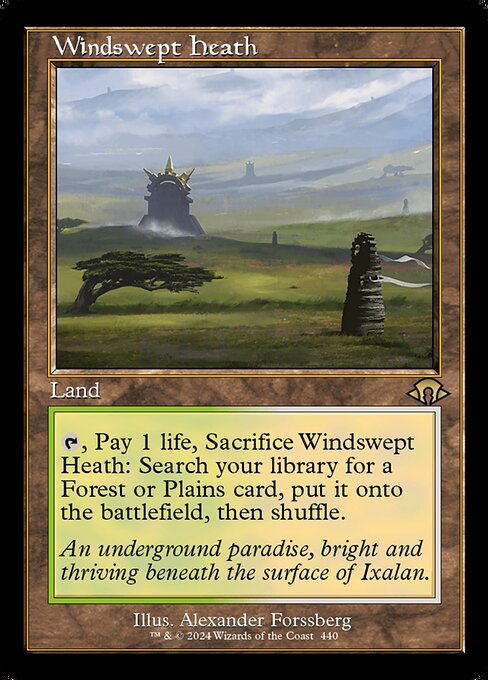 , you can get all five land types as early as turn two. Pair these two things together, and you've got a fairly easy win that can KO all opponents regardless of life total, board state, and anything else.
, you can get all five land types as early as turn two. Pair these two things together, and you've got a fairly easy win that can KO all opponents regardless of life total, board state, and anything else.
Channel
Commander is a format with 40 life. 40! Paying life for things is already powerful, and that's with Channel banned. If this were legal, any player with a copy on the table would have access to 40 colorless mana at the start of the game... And that's busted. With that much mana, that player could dump all the biggest colorless spells in the game or combo off and easily win games.
Dockside Extortionist
Dockside is one of four cards most recently added to the Commander ban list, and the Rules Committee (before stepping down) said that it was something they'd be eyeing for a long time. The ability to make a ton of treasures for two mana was an easy way to go "mana positive" very early in the game, especially when you consider how easy it is to blink or reanimate the card and get the trigger again.
Overall, Dockside is guilty of (at least often) snowballing out of control and giving one player a somewhat insurmountable advantage early in the game for a very small mana investment.
Emrakul, the Aeons Torn
Emrakul does too much. You get a 15/15 with flying and protection from colored spells that can't be countered, an extra turn, and force someone to exile six permanents when Emrakul attacks them. In short, this translates very closely to 15 mana win the game. Before its banning, it was undoubtedly the best thing you could do with 15 mana.
Erayo, Soratami Ascendant
Once you've cast four spells on your turn (granted, this can be somewhat challenging), Erayo will counter the first spell each opponent casts. Not only is this generally considered not to be fun to play against, but it can really affect how games have to be played. For example, players have their number of castable spells cut in half, and even removing Erayo will require having a throwaway card.
Fastbond
Fastbond provides players with access to too much mana. You could play this on the first turn, then drop every other land in your hand for one life each and be miles ahead. This 100% falls into that "Cause severe resource imbalances" category," which also makes it unfun to play against. And having that big of an advantage certainly puts this in the "Allow players to win out of nowhere" section as well. Fastbond is certainly a card that needed a ban on multiple levels.
Flash
Flash hasn't always been banned. In fact, it was only banned somewhat recently and used to be the premiere win con of CEDH. You could do a few things with the card, but the one that landed it on the ban list is how it works with Protean Hulk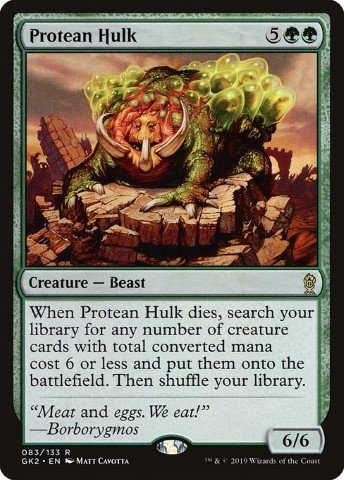 . You cast Flash for two, put a Hulk into it, and let it die to Flash. Boom! You search your library for any number of creature cards with a total mana value of 6 or less and put them onto the battlefield.
. You cast Flash for two, put a Hulk into it, and let it die to Flash. Boom! You search your library for any number of creature cards with a total mana value of 6 or less and put them onto the battlefield.
Without going too deep into the combos, Flash + Hulk was always two mana win the game and was very hard to interact with. Not only was it extremely powerful, but it was also repetitive and stifled diversity. If you wanted the fastest combo win possible, you played this, and every deck grabbed the same combo creatures.
Gifts Ungiven
The rules committee is careful when it comes to tutors, and this is a big one. There are indeed some four-card combinations that win on the spot that this would enable players to grab all at once. And I think that's issue number one. Most tutors grab one card; Gifts give you four cards.
Beyond that, the downside of getting cards with different names doesn't matter in Commander, considering it's a singleton format. So, it kinda falls into that "doesn't work within the framework of commander" category. And lastly, players often take their sweet time picking and finding the card they want and then shuffling... And that's with only a single card. When you're looking for four, it can take quite a long time, which is something they surely considered.
If the choices don't take a while, someone is probably grabbing a preset bundle of game-winning cards. So, it's a damned if you do, and damned if you don't situation. When used fairly to grab situational cards, it slows the game down. When it doesn't slow the game down, it's probably a win the game on the spot card.
Golos, Tireless Pilgrim
Golos was a reasonably recent banning that many players don't like too much. And while the card doesn't overtly break many of the guidelines that other cards do, it was undoubtedly guilty of crushing diversity in the format. It was the best thing you could be slotting into a five-color deck, pushing many others out of play.
There's also the issue that it consistently allows you to play free spells and circumvent commander tax. Sorry guys, I don't think we're getting Golos back... But you can always rule zero it.
Griselbrand
Griselbrand is powerful in every format he's played in. But when it comes to EDH, in particular, he's downright broken. In a format where players have 40 life, paying seven of it to draw seven cards is not nearly the same drawback as when you have 20 life. And Griselbrand would be able to be a commander, too!
Let me fill you in if you've never seen the card in action. When Griselbrand hits the table and starts drawing cards, it often (but not always, which also sucks for the table) means the end of the game. This would especially be true in Commander, where you could quickly ramp into him. Having him in the commander zone would make the decks way too consistent, as well.
Hullbreacher
Again, "Cause severe resource imbalances" was a reason for considering a card bannable, and Hullbreacher certainly does that. Not only does it stop all opponents from drawing additional cards, but it also gives you treasure tokens instead. The card was everywhere for a while and proved to create some nasty resource imbalances and not be very fun for 3/4s of the table.
Iona, Shield of Emeria
Iona is banned for its ability to lock players completely out of playing magic. Say you're playing a mono-black deck, and someone picks black with Iona - You can't cast spells. This also means even drawing removal can't get you back in... There's pretty literally nothing a mono-colored deck can do, and that's not good.
Jeweled Lotus
Jeweled Lotus landed on the ban list only recently. Simply put, three mana for zero mana leads to some very explosive starts, even without good opening hands, because you've always got access to your commander. So, even though you're limited to what you can do with the free mana, it's not much of a downside.
This is especially true when you consider that many four and five-mana commanders (which could come out as early as turn two) have built-in card advantage or protection, which can give you a ton of additional value beyond the initial three-mana that Lotus makes.
Karakas
Commander is centered on building your deck around a legendary creature. Karakas bounces legendary creatures... It's pretty easy to see how this would disrupt the format. And it's too good not to play so anyone playing white would sleeve this up. Now, no one can keep their commanders in play, and it becomes challenging to sit down and actually play whatever deck you built.
Leovold, Emissary of Trest
Leovold is pretty oppressive. He limits the amount of cards opponents can draw and lets the pilot draw a ton. Again, resource and fun imbalance is at play here. And if you pair Leovold with wheel effects, the game is more or less over because only one player will have a hand. You can do similar things with Narset, Parter of Veils , but the major problem comes from Leovold being playable as a commander.
, but the major problem comes from Leovold being playable as a commander.
Library of Alexandria
I don't think Library of Alexandria grievously violates any of the principles that are getting other cards banned in EDH. That said, it's still very good and gives any deck running a copy an advantage over those not running it. If it didn't produce mana, I think it may be okay... But it does. If you need mana, you've got it. When you don't and have seven lands in hand, you can draw a free card. That's a big upside for really no downside.
Limited Resources
The name pretty much says it all here: limited resources. Without lands, you can't play spells; when you can't, you're really not playing Magic: The Gathering. Sending everyone back to five lands is pretty bad. And when someone builds back up... They just can't play any more lands. This one is banned for making it hard for players to play and enjoy Commander games at a meager cost.
Lutri, the Spellchaser
Lutri was banned in Commander before it was even released. Many of the Ikoria companion cards are powerful. In the case of Lutri, it falls into the category of cards that don't work with EDH rules. The requirement you have to meet to play the card as your companion is that you only have one copy of each card, which is given in Commander. So, Lutri, the Spellchaser, would be an absolutely free extra card for every Izzet deck with zero downside.
Mana Crypt
Mana Crypt is a "fast mana" staple in EDH, and the ban upset many players. That said, there is no doubt that Crypt can put a particular player way ahead of everyone else, mainly when you use the free mana it produces to power out other mana rocks like Arcane Signet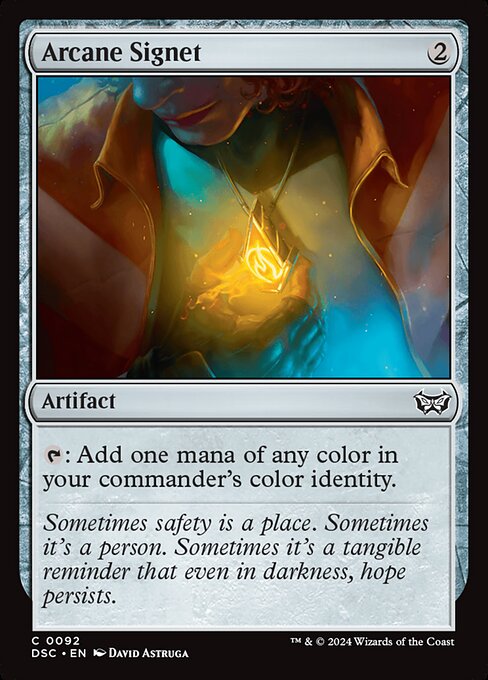 or Sol Ring
or Sol Ring .
.
Another thing that was mentioned in the original ban announcement was that the downside of losing three life was only impactful if the game went past a certain point. However, if you can hit the grown running fast enough with a Mana Crypt (and other mana rocks) that you could end the game fast enough to essentially negate the downside all-together.
Mox Emerald, Jet, Pearl, Ruby, And Sapphire
The Mox cards all generate a mana of one of the five colors and are zero cost. Some legal spells generate free mana, but the Moxen has problems beyond the primary issue of fast mana. For one, they're auto includes in decks of their colors. Playing black? No reason not to play Mox Jet.
This leads me to the next issue: Five-color decks would always play all five! Not only does this reduce diversity, but it gives five color decks a massive advantage in ramp over other color combinations. These should be banned, no doubt about it.
Nadu, Winged Wisdom
Ah, Nadu. Everyone's least favorite bird has been banned in multiple formats, including commander. Nadu was bad about grinding out games by accumulating resources and making repetitive, non-interactive plays that had no guarantee to win the game. Perhaps the worst part is that Nadu would grind games to a halt, even when just played in casual decks with a simple simic shell.
Panoptic Mirror
Panoptic Mirror is a weird one to see. The committee doesn't usually go into great detail about why they ban particular cards, and that's part of the reason I'm making this list. That said, it's not exactly intuitive as to what the problem with this card is. But I've got a good guess. The card is problematic because it can be a "win the game on your upkeep" card. Or it could not be.
If someone has a Time Walk in hand, Panoptic Mirror will represent infinite turns and the end of the game. If they don't have something like an extra turns spell, it may be far from something that needs to be answered. This uncertainty causes an unfun "answer the card or possibly lose the game out of nowhere" situation.
in hand, Panoptic Mirror will represent infinite turns and the end of the game. If they don't have something like an extra turns spell, it may be far from something that needs to be answered. This uncertainty causes an unfun "answer the card or possibly lose the game out of nowhere" situation.
Paradox Engine
Paradox Engine is guilty of two things - Being extremely overpowered by enabling players to storm off, cast a bunch of spells, and win the game. And causing players to take very long turns. It turns out untapping all of your mana rocks and creatures gave players a ton of options and decisions to make, and very few people enjoy sitting through a 15-minute turn.
Primeval Titan
Primeval Titan is the card on the commander ban list that I most often hear people wondering about or making cases to unban. Let's be clear: Prime Time is banned for a good reason. When it enters the battlefield or attacks, you get to tutor for any two lands in your deck and put them into play untapped.
First, this is pretty insane ramp. The first person to cast the card gets way ahead on mana. Next, there's the issue that this can get any land. So, if this were legal, it would consistently tutor for things like Field of the Dead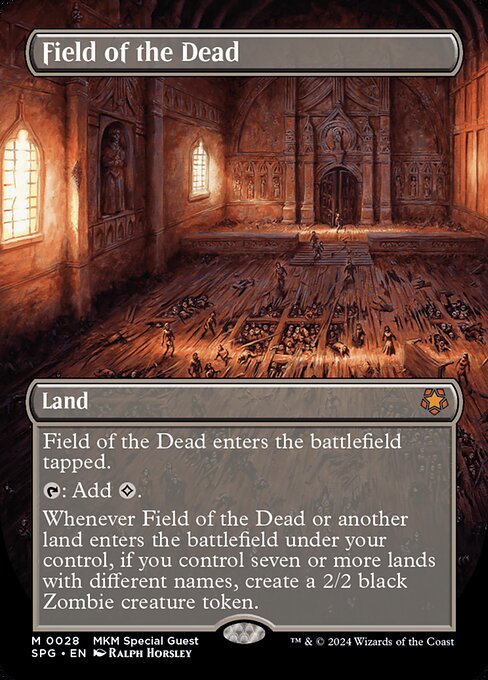 , Nykthos, Shrine to Nyx
, Nykthos, Shrine to Nyx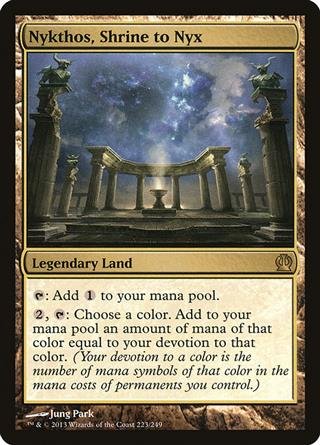 , and Gaea's Cradle
, and Gaea's Cradle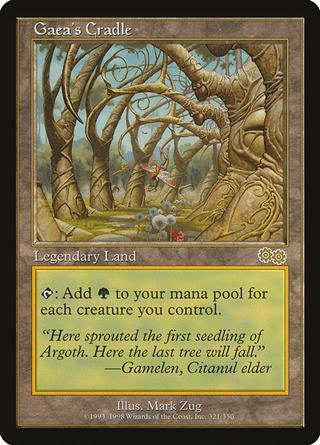 .
.
Prophet of Kruphix
Prophet of Kruphix is banned for being downright putrid in a format with four players. Assuming you're playing creatures, the card essentially says, "Take an extra turn for each opponent you have." And yes, Seedborn Muse isn't banned. But there's one key difference. Seedborn Muse gives you a ton of mana, but you've got to build your deck in a way you can use it to its full potential.
isn't banned. But there's one key difference. Seedborn Muse gives you a ton of mana, but you've got to build your deck in a way you can use it to its full potential.
That's not true with the Prophet of Kruphix. It gives you a ton of mana and something to do with it. As long as you play enough creatures, this plays much like Seedborn Muse + Vedalken Orrery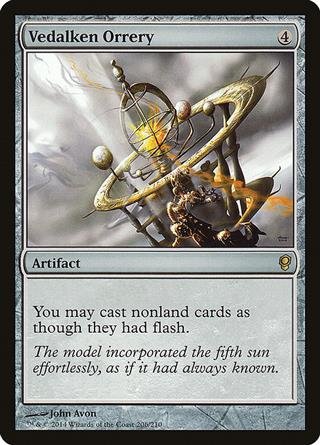 all wrapped up in one package. In 1V1, it's okay. In multiplayer, taking way more than your fair share of play for very little work really throws things off.
all wrapped up in one package. In 1V1, it's okay. In multiplayer, taking way more than your fair share of play for very little work really throws things off.
Recurring Nightmare
Recurring Nightmare makes games all about it. In short, it's repeatable, reusable, and hard to stop. Once it gets going, the player will cast it every turn for the rest of the game, and there isn't much people can do to stop it. For example, someone sacs a creature, puts Recurring Nightmare back into their hand, and reanimates a creature. They can do this over and over, and considering it can be bounced back to hand, it's hard to interact with.
It's not a particularly broken card, but it's not fun to play against.
Rofellos, Llanowar Emissary
Rofellos finds himself on the commander ban list for generating an unfair advantage in potential mana. Before you think this isn't as broken as it looks, please note that it's a legendary creature, meaning were it legal, it could be a commander. As players have pointed out, this means that just by playing one forest per turn and casting Rofellos, you'd have six mana on turn three. And that's at the least!
Shahrazad
Shahrazad is an awesome card on many levels. The flavor of the card is fantastic, and conceptually, it's very unique. However, from a gameplay perspective, it's a nightmare. Commander games can drag on and take quite a while to finish without this in the format. Now, imagine having to stop the game and start a sub-game. It would be ridiculous, and there's a good reason it's banned in all formats.
Sundering Titan
Here, we have another card on the ban list for blowing up lands. In the case of Sundering Titan, whenever it enters or leaves the battlefield, it can destroy up to five lands, assuming there's one for each basic land type in play. What truly makes this oppressive is that it is an enters and exits the battlefield ability. So, targeting the titan with a blink effect like Ephemerate will remove as many as 10 lands.
will remove as many as 10 lands.
Furthermore, you could build your deck with lands without basic land types and ensure that the titan never removes any of your lands. This makes it very easy to be the only player in the game with lands, which adds to the problematic nature of the card in EDH.
Sway of the Stars
Sway of the Stars pretty much restarts the game and gives each player seven life. Imagine you've played a solid 45 minutes of Commander, and someone were to cast this. Well, nothing that happened before it resolved matters anymore. It doesn't matter who was ahead or behind; the game starts over, and everyone is at seven. Not only is this generally unfun, but it would result in major amounts of time being wasted.
Sylvan Primordial
Sylvan Primordial is an absolutely busted card in EDH. When it enters the battlefield, you blow up a noncreature permanent for each opponent. And for each permanent you destroy this way, you get to search out a forest and put it onto the battlefield. Whew! Every opponent goes down a card, and you go up several. In a game with a whole pod, this will always work out to a 6-for-1 in favor of the person casting the Primordial.
That's already insane... And it only gets worse from there. Players would ramp into the card super quickly when this was legal and then blink or copy it, skewing the game even further. Each time this happened, one player would go way up in resources and, at the same time, put everyone else further behind.
Time Vault
Time Vault is utterly abusable and can "go infinite with a ham sandwich," as they say. You can tap it for an extra turn! This is supposed to be balanced by the fact that it enters the battlefield tapped and doesn't untap naturally unless you skip a turn. However, with things like Kiora's Follower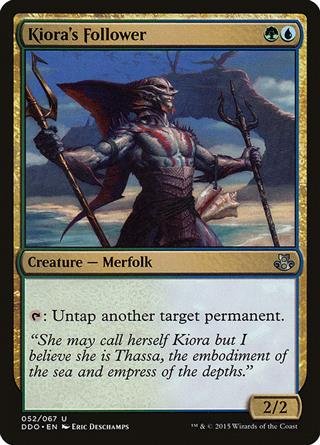 , these balances don't mean anything, and the card wins the game on the spot. There is no world in which Time Vault could ever be commander legal.
, these balances don't mean anything, and the card wins the game on the spot. There is no world in which Time Vault could ever be commander legal.
Time Walk
Time Walk is two mana; take an extra turn, which is nowhere near where players want commander to be. For the record, Time Warp is a good, playable, powerful card at five mana. Now, take three mana (and a blue pip) off the card, and you've got an omega power magic card. It wouldn't take much more than an Eternal Witness
is a good, playable, powerful card at five mana. Now, take three mana (and a blue pip) off the card, and you've got an omega power magic card. It wouldn't take much more than an Eternal Witness to snag infinite turns with Time Walk in the format.
to snag infinite turns with Time Walk in the format.
Tinker
Tinker is undoubtedly the best artifact tutor in print, and you could do some very nasty stuff with it in Commander. You could cheat a Blightsteel Colossus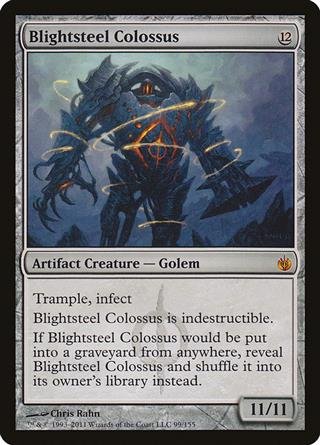 into play for three mana. While this is a pretty good example of how Tinker is broken, it's far from the only one. In general, the card would win the game on the spot on most occasions and create a "the first person to draw tinker wins the game" landscape in EDH.
into play for three mana. While this is a pretty good example of how Tinker is broken, it's far from the only one. In general, the card would win the game on the spot on most occasions and create a "the first person to draw tinker wins the game" landscape in EDH.
Tolarian Academy
Tolarian Academy is a land that will never tap for just one mana. In fact, it would likely tap for six or more mana pretty quickly, which isn't fair at all. Lands that can produce even one extra mana are good... Anything beyond that starts to get broken, and this fits the bill. Were this legal, it would mean massive, game-winning mana advantages for the decks that played it. On a philosophical level, the fact that this is banned makes you wonder if Gaea's Cradle should be too.
should be too.
Trade Secrets
Trade Secrets is not a fair card in multiplayer formats. Essentially, two players could agree to draw their entire decks if they wanted. And the remaining two players get nothing and may as well not be playing the game at that point.
Upheaval
If ever a card should be banned in Commander, it's Upheaval. It's one of those cards that's guilty of essentially restating games. Bouncing everything, lands included, back to hand, invalidates pretty much everything that happened before that moment. And what's worse is that were it legal, you could build your deck specifically to play around upheaval, making it a "win on the spot" type card.
Yawgmoth's Bargain
In a format with 40 life, you can't have cards like Yawgmoth's Bargain. Players could ramp into this, immediately draw 30+ cards, and be sure to win the game on the spot from there. The card would be a problem at several levels. It's way too powerful, allows auto wins out of nowhere, would be an auto-include in any deck capable of playing it, and is generally not fun to have in the format.


